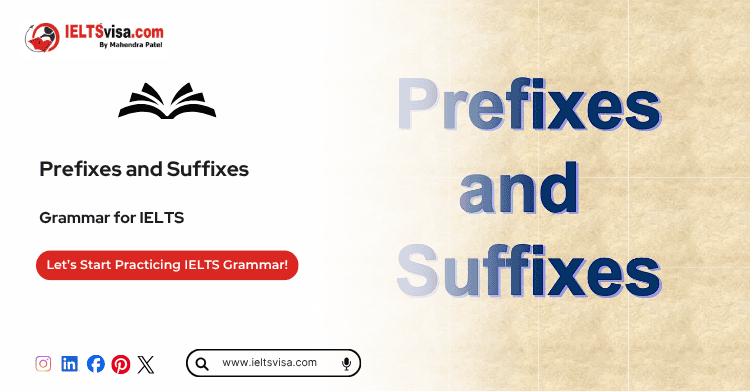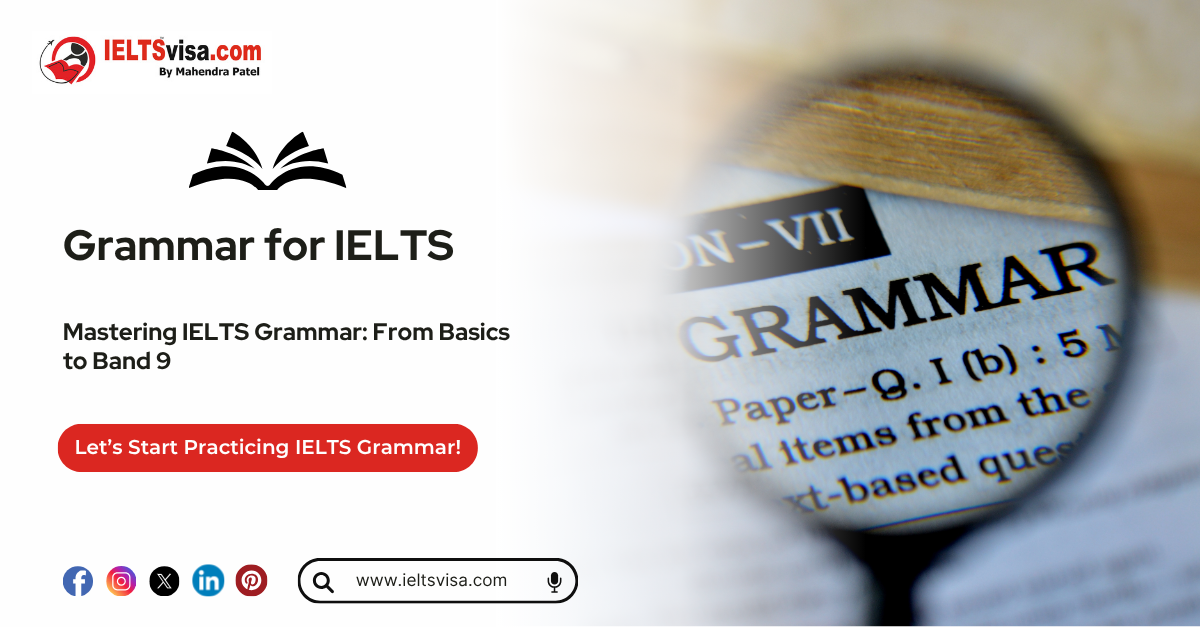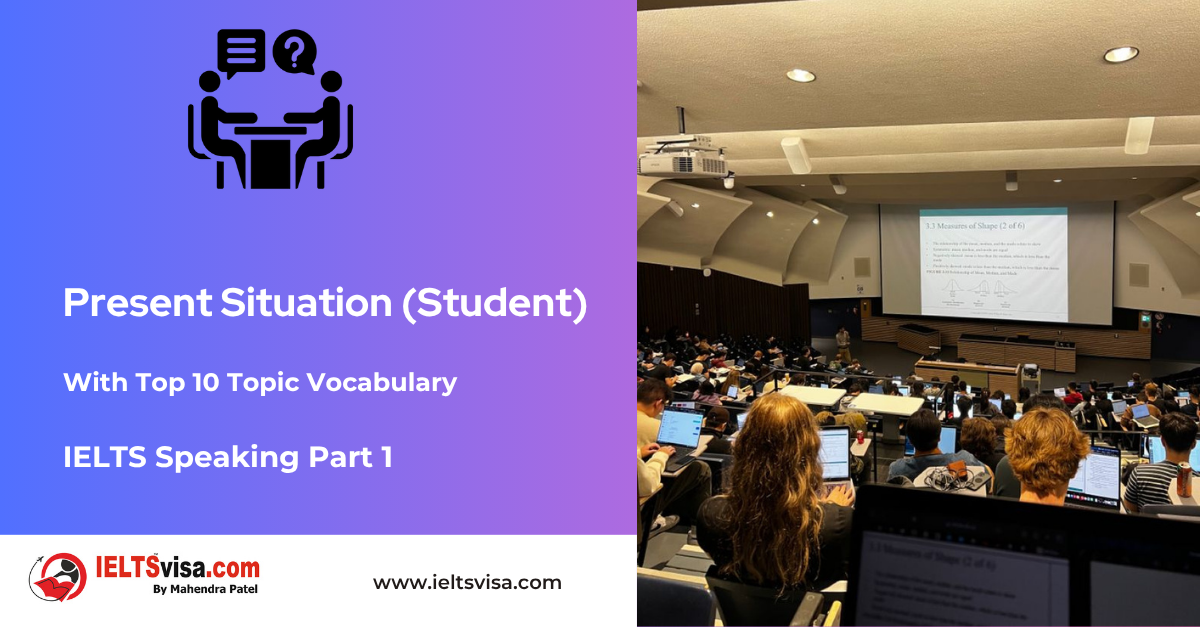Prefix and Suffix
Grammar for IELTS

Table of Contents
- What Are Prefixes and Suffixes? – Meaning and Definition
- Why Are Prefixes and Suffixes Important?
- Spelling Rules for Adding Prefixes and Suffixes
- Common Prefixes and Suffixes with Examples
- Examples of Words with Both Prefixes and Suffixes
- Frequently Asked Questions on Prefixes and Suffixes
What is a Prefix?
A prefix is a group of letters added to the beginning of a word to change its meaning.
For example:
-
- Adding “un-” to “happy” makes “unhappy,” which means “not happy.”
- Adding re- to do creates redo, meaning “to do again.”
Definition: According to the Oxford Learner’s Dictionary, a prefix is “a letter or group of letters added to the beginning of a word to change its meaning.”
What is a Suffix?
A suffix is a group of letters added to the end of a word to change its form, meaning, or grammatical function.
For example:
-
- Adding -ness to happy makes happiness, which is a noun meaning “the state of being happy.”
- Adding -able to read makes readable, which means “can be read.”
Definition: A suffix is defined as “a letter or group of letters added to the end of a word to make another word, such as -ly in quickly or -ness in sadness.”
Why Are Prefixes and Suffixes Important?
Prefixes and suffixes are building blocks of the English language. Here’s why they are essential:
1. Expand Vocabulary: By understanding prefixes and suffixes, you can decode the meanings of new words.
-
- Example: Knowing anti- means “against” helps you understand antibiotic means “against bacteria.”
2. Improve Writing and Speaking: Using different word forms helps in creating rich and diverse sentences.
-
- Example: Instead of saying the teacher is kind, you can say the teacher shows kindness.
3. Grammar and Usage: Prefixes and suffixes allow words to change grammatical roles (e.g., verbs to nouns, adjectives to adverbs).
Spelling Rules for Adding Prefixes and Suffixes
Rules for Adding Prefixes
1. No Spelling Change to the Root Word: Simply add the prefix to the base word.
-
- Example: happy → unhappy, play → replay
2. Hyphen Usage: Some prefixes require a hyphen, especially with non- and ex-.
-
- Example: non-violent, ex-boyfriend
Rules for Adding Suffixes
1. Words Ending in ‘Y’: Change y to i when adding suffixes like -ness or -ly.
-
- Example: happy → happiness, easy → easily
- Exception: If y follows a vowel, keep the y.
- Example: play → playing
2. Silent ‘E’ Rule: Drop the silent e when adding suffixes like -ing or -able.
-
- Example: use → using, move → movable
- Exception: Keep the silent e if it’s needed for pronunciation.
- Example: age → manageable, like → likeable
3. Doubling Consonants: For short words ending in a single vowel and consonant, double the consonant before adding a suffix.
-
- Example: run → running, big → biggest
4. Adding ‘-tion’ or ‘-sion’: For words ending in -de or -te, drop the e and add the suffix.
-
- Example: ignite → ignition, divide → division
Common Prefixes and Suffixes with Examples
Common Prefixes
| Prefix | Meaning | Examples |
| Un- | Not | Unkind, Uncertain |
| Re- | Again | Revisit, Rebuild |
| Pre- | Before | Preview, Preheat |
| Dis- | Opposite of | Disagree, Disconnect |
| Mis- | Wrong | Misunderstand, Misplace |
| Anti- | Against | Antisocial, Antifungal |
| Sub- | Under | Submarine, Subconscious |
| Inter- | Between | Interact, Interfere |
| In- | Not | Inactive, Insecure |
| Im- | Not | Impossible, Immature |
Common Suffixes
| Suffix | Function | Examples |
| -ness | State/Quality | Kindness, Sadness |
| -ly | Forms adverbs | Quickly, Softly |
| -ful | Full of | Beautiful, Wonderful |
| -ment | Action/Result | Achievement, Movement |
| -tion | Act/Process | Creation, Relation |
| -able | Can be | Lovable, Manageable |
| -ible | Can be | Visible, Audible |
| -less | Without | Hopeless, Fearless |
| -y | Characterized by | Noisy, Dusty |
| -er | Comparative | Bigger, Brighter |
Examples of Words with Both Prefixes and Suffixes
| Prefix | Base Word | Suffix | New Word |
| Un- | Happy | -ness | Unhappiness |
| Im- | Perfect | -ion | Imperfection |
| Re- | Build | -ing | Rebuilding |
| Dis- | Respect | -ful | Disrespectful |
| Mis- | Interpret | -ation | Misinterpretation |
| In- | Secure | -ity | Insecurity |
| Ir- | Replace | -able | Irreplaceable |
| Pre- | Historic | -al | Prehistorical |
Frequently Asked Questions on Prefix and Suffix
Q1: What is a prefix?
A prefix is a group of letters added to the beginning of a word to change its meaning. Example: Un- in Unhappy.
Q2: What is a suffix?
A suffix is a group of letters added to the end of a word to change its form or function. Example: -ness in Happiness.
Q3: Why are prefixes and suffixes important?
They help expand vocabulary, improve writing, and change grammatical forms of words.
Q4: List some common prefixes.
Common prefixes include un-, re-, pre-, dis-, mis-, and non-.
Q5: List some common suffixes.
Common suffixes include -ly, -ness, -ful, -able, -ment, and -tion.

Our Books
Master IELTS Speaking Part 1
IELTS Writing Task 1 Book
IELTS Writing Task 2 Book
Practice IELTS Other Modules
IELTS Listening
The IELTS Listening test assesses how well you can understand spoken English in various contexts. It lasts about 30 minutes and is divided into four sections with a total of 40 questions. The listening tasks become increasingly difficult as the test progresses.
IELTS Academic Reading
The IELTS Academic Reading section assesses your ability to understand and interpret a variety of texts in academic settings. It is designed to evaluate a range of reading skills, including skimming for gist, reading for main ideas, reading for detail, understanding inferences, and recognizing a writer's opinions and arguments.
IELTS Speaking
The IELTS Speaking test assesses your ability to communicate in English on everyday topics. It lasts 11-14 minutes and consists of three parts: introduction, cue card, and a discussion based on the cue card topic.
IELTS General Reading
IELTS General Reading tests your ability to understand and interpret various types of texts. Here are some key areas and types of content you can expect to encounter in the reading section, along with tips for effective preparation.
IELTS Academic Writing Task 1
In IELTS Academic Writing Task 1, you are presented with a visual representation of information, such as graphs, charts, tables, or diagrams, and you are required to summarize, compare, or explain the data in your own words.
IELTS General Writing Task 1
In IELTS General Writing Task 1, you are required to write a letter based on a given situation. The letter can be formal, semi-formal, or informal, depending on the prompt. Here’s a breakdown of the key components to include in your letter
IELTS Academic Writing Task 2
In IELTS Academic Writing Task 2, you are required to write an essay in response to a question or topic. Here’s a guide to help you understand the essential elements of this task
IELTS Exam Tips
To succeed in the IELTS exam, practice regularly, familiarize yourself with the test format, improve your vocabulary, develop time management skills, and take mock tests to build confidence.
Grammer for IELTS
Grammar is the foundation of effective communication in English. Understanding tense usage, subject-verb agreement, and sentence structure enhances clarity and coherence in writing and speaking.
Vocabulary for IELTS
Vocabulary plays a crucial role in the IELTS (International English Language Testing System) exam, especially in the Speaking and Writing sections. Here’s an overview of why vocabulary is important and how it impacts your performance
RECENT IELTS SAMPLES QUESTIONS AND ANSWERS
IELTS Speaking Part 1 – Favourite Sujbect – Physics
IELTS Speaking Part 1 - Favourite Sujbect - Physics Q: What is your favourite subject? A: My favourite subject...
IELTS Speaking Part 1 – Present Situation (Student)
IELTS Speaking Part 1 - Present Situation (Student) Q1: Are you a student or do you work?A: I’m a full-time...
IELTS Speaking Part 1 – Present Situation – Employee – as an International Student and Social Worker
IELTS Speaking Part 1 - Present Situation - Employee - as an International Student and Social Worker Q1: Are...
IELTS Speaking Part 1 – Persent Situation – Employee- as an Electric Engineer
IELTS Speaking Part 1 - Persent Situation - Employee- as an Electric Engineer Q1: What do you do for a...
IELTS Speaking Part 1 – Persent Situation – Employee – as an Software Engineer
IELTS Speaking Part 1 - Persent Situation - Employee - as an Software Engineer Q1: What do you do for a...
IELTS Speaking Part 1 – Persent Situation – Married
IELTS Speaking Part 1 - Persent Situation - Married Q1: Are you married?A: Yes, I am married. My spouse and I...













